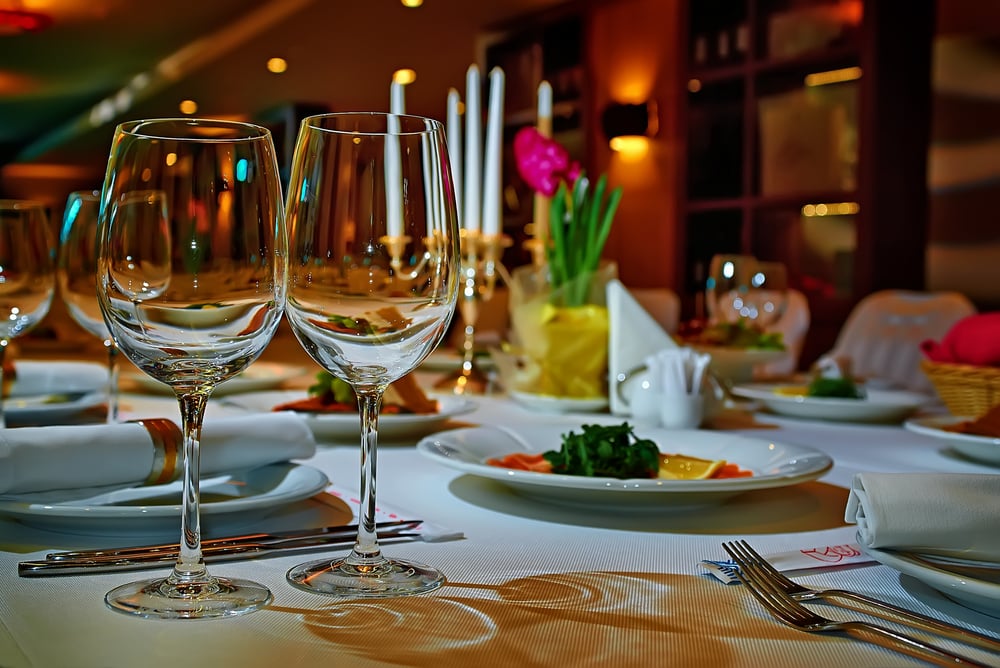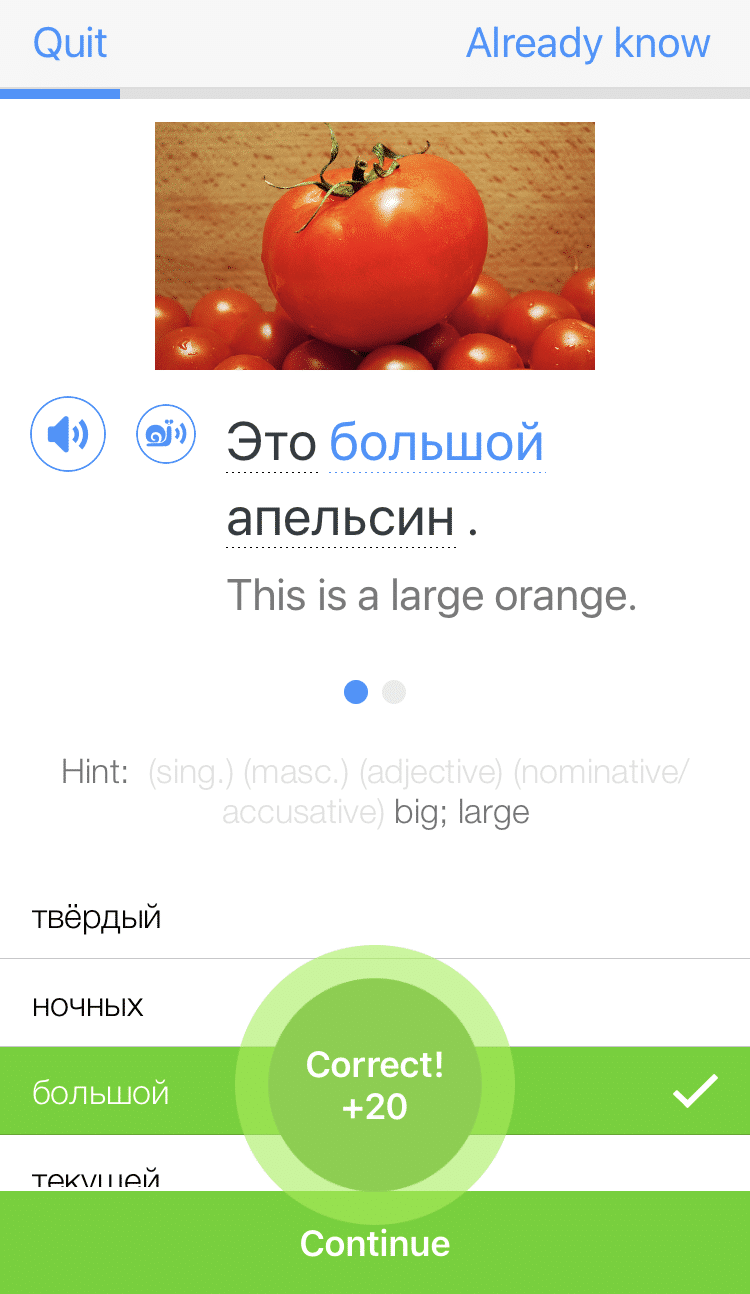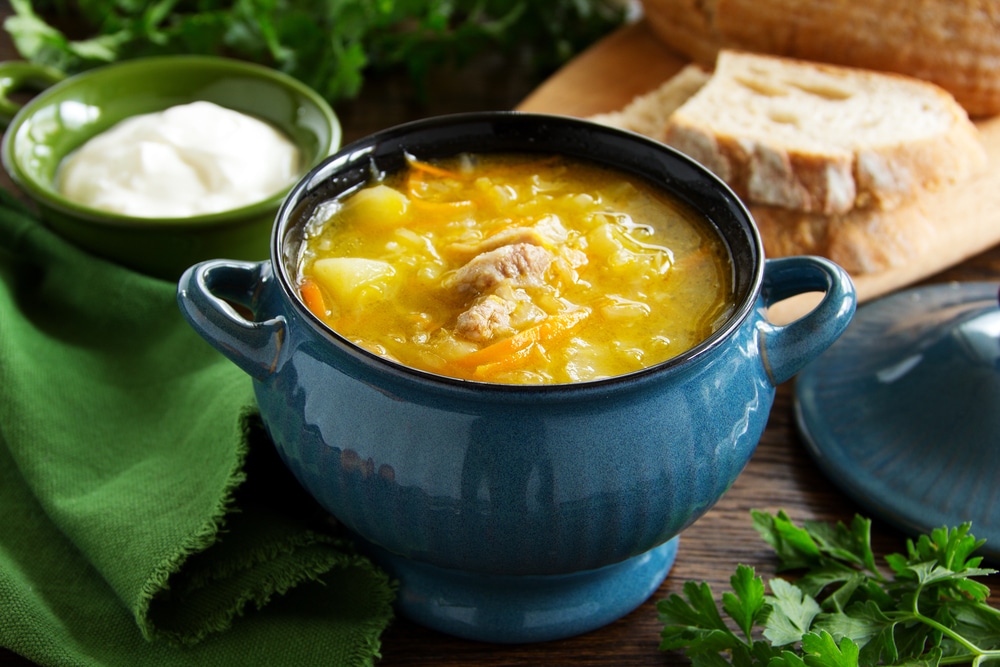
How to Order Food in Russian: 65 Words and Phrases
When traveling to a new place, one of the important things to know is how to order food, and ordering in Russian can seem scary at first. (It was for me!)
One way to get around this is to prepare yourself before you go. With a little practice, you can confidently order food in a Russian restaurant and trust that you’re getting what you want.
Let’s look at 65 different words and phrases to order food in Russian.
Contents
- 65 Words and Phrases to Order Food in Russian
- Restaurant Dining Etiquette in Russia
- And One More Thing...
Download: This blog post is available as a convenient and portable PDF that you can take anywhere. Click here to get a copy. (Download)
65 Words and Phrases to Order Food in Russian
Talking to Your Waiter
Что вы хотите? — What would you like?
Что вы будете заказывать? — What would you like to order?
Что вы посоветуете? — What do you recommend?
У вас есть…? — Do you have…?
Я хочу… — I want…
Я буду… — I’ll have…
Принесите мне… — Bring me…
Сколько стоит? — How much does…cost?
Официант — Waiter
Шеф-повар — Chef
Бармен — Bartender
Dining with Friends
Приятного аппетита! — Bon appetit!
This saying is used before meals.
За ваше здоровье и благополучие! — For your health and prosperity!
This is a popular drinking toast.
General Restaurant Terms
At the table:
Меню — Menu
Еда — Food/Meal
Стол — Table
Стул — Chair
Нож — Knife
Ложка — Spoon
Вилка — Fork
Стакан — Glass
Миска — Bowl
Тарелка — Plate
Салфетка — Napkin
Meals:
Завтрак — Breakfast
Обед — Lunch
Ужин — Dinner
Перекус — Snack (between meals)
Закуска — Snack (that accompanies drinks)
Dining and paying:
Заказать — To order
Есть — To eat
Платить — To pay
Счёт — Check
Popular Russian Foods
Каша — Kasha
Kasha is a popular national dish in Russia. In the U.S., kasha is most often associated with buckwheat. However, in Russia, kasha can refer to a porridge made of any grain. It’s usually eaten for breakfast, especially if it’s sweet. Savory kinds might be consumed at other times of the day.
Суп — Soup
Soup is extremely popular in Russia. You’ll find countless varieties of both hot and cold soups.
Щи — Shchi
While it may not be familiar to Americans, shchi is one of the most popular soups in Russia. It’s a cabbage-based soup that Russians have enjoyed for more than 1,000 years. It usually contains cabbage, meat, a selection of vegetables and spices.
Борщ — Borscht
Perhaps the most well-known Russian soup, borscht actually originated in Ukraine. Still, it has long been popular in Russia. While it’s most known as a beet soup, other varieties do exist.
For instance, green borscht features sorrel. Additionally, borscht may be served hot or cold and sometimes has meat.
So in summation, borscht may or may not contain beets, may or may not contain meat and may or may not be served hot… This is why menu descriptions are so important.
Блины — Pancakes (Blini)
Blini are thin pancakes. They come with a huge and diverse array of toppings to suit any palate. You may find sweet blini with toppings like jam and honey. More savory varieties may contain caviar, mashed potato or meat, as seen in the main image at the top of this post.
Бефстроганов — Beef stroganoff
Beef stroganoff originated in Russia in the mid-1800s. Since then, it has become popular internationally. While variations exist, it usually contains egg noodles, beef, mushrooms, onion and sour cream.
Голубцы — Cabbage rolls
Cabbage rolls are popular throughout much of Asia, the Middle East and Europe, so it should come as no surprise that they’re also common in Russia. Russian cabbage rolls usually contain mincemeat and a grain like rice or buckwheat. The sauce usually contains tomato sauce and sour cream.
Икра — Caviar
Russia is well-known for its caviar, which is a salty fish egg delicacy. Russian caviar is considered some of the finest in the world and is popular internationally.
Ржаной хлеб — Rye bread
Bread is a staple of the Russian table, and rye bread (also called “black bread”) is particularly popular. Sharing bread signifies friendship, and in the past Russians used to welcome guests with salt and rye bread.
The popularity of rye bread began because it was less expensive and more nutritious than wheat bread, but rye bread quickly became a force in Russian culture.
Сельдь — Herring
Herring is eaten in various preparations, including pickled or in salads. One popular salad is селёдка под шубой (“herring under a fur coat”), which also goes by the English name “dressed herring.” This dish features pickled herring, onion, mayonnaise and cooked vegetables like potatoes and beets.
Салат Оливье — Olivier salad
Russians love their mayonnaise-based salads. Olivier salad is a popular option that was invented by a Belgian cook working at a Moscow restaurant in the 1800s.
It’s a potato salad with carrots, peas, hard-boiled eggs, pickles, onions, apples and sometimes meat. It’s particularly popular on New Year’s Eve.
Винегрет — Vinegret salad
This salad is just as popular as the previous two, and, yes, features mayonnaise as well. It also has diced vegetables, such as carrots, potatoes, peas and pickles. The biggest difference is that this one is often purple from beets.
Торт — Cake
A wide variety of cakes are popular in Russia, and to snag one, you just need the password and some rubles. And that password is…торт!
If you’re a cake fan, you might also want to look at this guide to Russian cakes.
Сгущённое молоко — Condensed milk
Often called сгущёнка for short, you’ll find condensed milk as a sweet topping or sweetener in general. It’s used on top of blini, in tea, as an ingredient in cakes or other baked goods, and more.
Сметана — Sour cream
This is another crucial Russian ingredient you’ll find everywhere. It can be eaten with dumplings, in soups, desserts, baked goods, salads—the possibilities are absolutely endless!
Drinks
Вода — Water
Водка — Vodka
It goes without saying that vodka is popular in Russia. The very name is the diminutive of “water,” which says a lot. Notice that the stress falls on different syllables when you say the two words out loud.
If you go to Russia, there’s a strong chance that someone (or some people) will expect you to drink vodka. If you don’t want to, have a good excuse ready. If you do want to, don’t try to out-drink Russians. Pace yourself and be sure to snack while you drink.
Чай — Tea
Tea, introduced in the 1600s, is also quite popular in Russia and is often associated with national identity.
Кофе — Coffee
Молоко — Milk
Сок — Juice
Газированная вода — Sparkling water
Газировка — Soda
Вино — Wine
Пиво — Beer
Special Diets
Вегетарианская диета — Vegetarian diet
The idea of what is and isn’t included in a vegetarian diet is likely to vary, so you may also want to compose a list of what you can’t eat.
Веганская диета — Vegan diet
Like vegetarianism, the idea of what’s included in a vegan diet may not be consistent. Printing a list of excluded items can be helpful. If you want to play it safe, you might also look into which restaurants are vegetarian- and vegan-friendly at Happy Cow.
Безглютеновая диета — Gluten-free diet
Wheat is widely used in Russian cooking, but you can still find some gluten-free options like potatoes, meat and some salads.
У меня аллергия на… — I have an allergy to…
арахис — peanuts
орехи — nuts
морепродукты — seafood
Restaurant Dining Etiquette in Russia
Before you start ordering food in Russian, it’s important to get familiar with the etiquette and customs of dining out in Russia:
- Usually, groups dining together don’t ask for separate checks. Instead, the group splits the bill themselves.
- Friends may offer to pay for your portion. It’s polite to decline respectfully. If they insist, don’t fight them, but also don’t jump on the offer too quickly.
- Opinions on tipping vary wildly. Tipping is polite, though not required. A good baseline tip is 10 percent. If the service is particularly good, you might tip more. If it’s particularly bad, you might tip less or avoid tipping altogether.
Here are some other general suggestions on how to prepare:
- Study Russian cuisine before traveling to Russia to help ensure that you always find something pleasing to your palate. You might read a book like “Russian Food and Regional Cuisine” or “Russian Cuisine: Traditional and Contemporary Home Cooking.
- Before you travel to Russia, consider studying the finer points of dining etiquette, especially if you plan on eating at any upscale restaurants. Etiquette Scholar offers helpful country-specific tips.
- If you’d like to get a better feel for when to use these words and phrases, or you’re interested in seeing them used in action, check out the popular Russian show Кухня (Kitchen). This comedy series is based in a Russian restaurant and deals with all of the hijinks that occur within it.
- You can also find podcast episodes that focus on food and dining.
- Another option is to use a program like FluentU, which teaches using videos and Russian content. You can search for food-related words and videos.
FluentU takes authentic videos—like music videos, movie trailers, news and inspiring talks—and turns them into personalized language learning lessons.
You can try FluentU for free for 2 weeks. Check out the website or download the iOS app or Android app.
P.S. Click here to take advantage of our current sale! (Expires at the end of this month.)
These 65 words and phrases are a great starter course in your Russian dining adventure. Use them in good health!
Download: This blog post is available as a convenient and portable PDF that you can take anywhere. Click here to get a copy. (Download)
And One More Thing...
If you love learning Russian and want to immerse yourself with authentic materials from Russia, then I should also tell you more about FluentU.
FluentU naturally and gradually eases you into learning the Russian language and culture. You'll learn real Russian as it's spoken by real Russian people!
FluentU has a very broad range of contemporary videos. Just a quick look will give you an idea of the variety of Russian-language content available on FluentU:

FluentU makes these native Russian videos approachable through interactive transcripts. Tap on any word to look it up instantly.

Access a complete interactive transcript of every video under the Dialogue tab. Easily review words and phrases with audio under Vocab.

All definitions have multiple examples, and they're written for Russian learners like you. Tap to add words you'd like to review to a vocab list.
And FluentU has a learn mode which turns every video into a language learning lesson. You can always swipe left or right to see more examples.

The best part? FluentU keeps track of your vocabulary, and gives you extra practice with difficult words. It'll even remind you when it’s time to review what you’ve learned. You'll have a 100% personalized experience.
Start using the FluentU website on your computer or tablet or, better yet, download the FluentU app from the iTunes or Google Play store. Click here to take advantage of our current sale! (Expires at the end of this month.)






